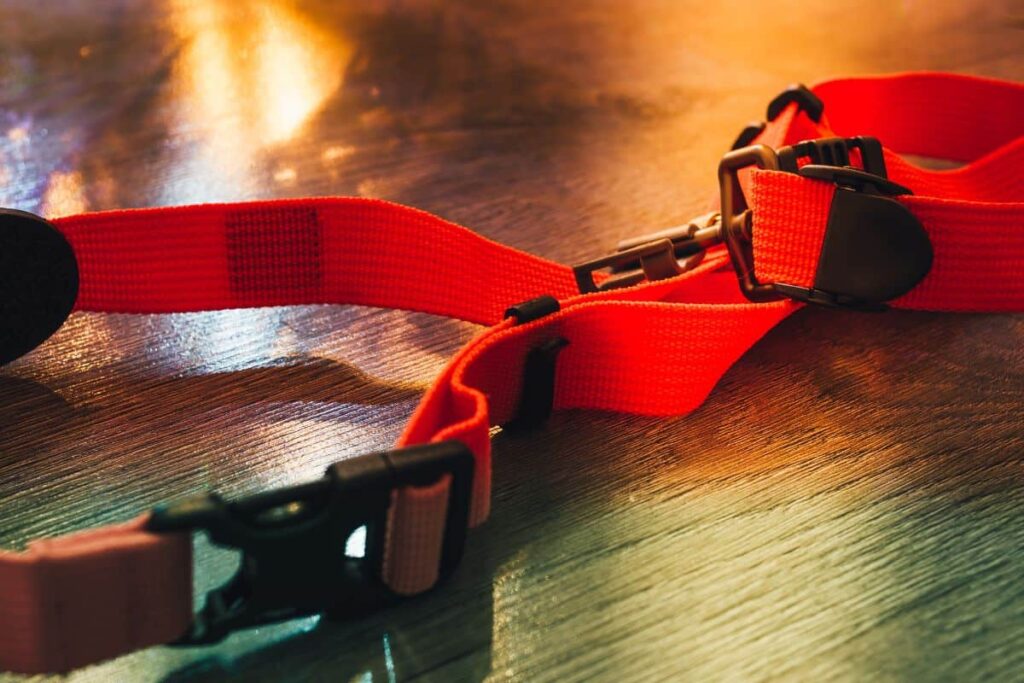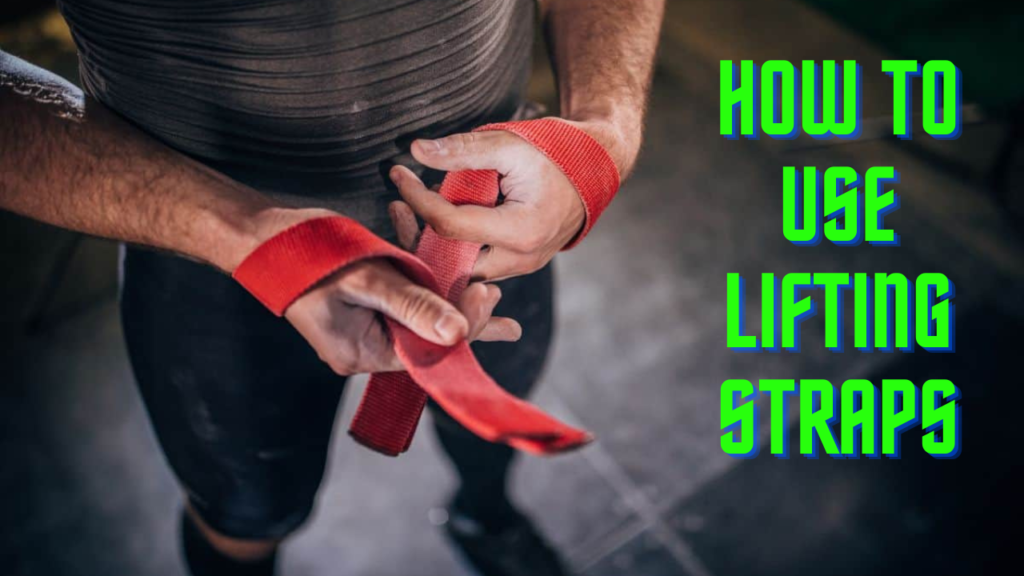We’ve all seen those big guys at the gym lifting big weights with lifting straps wrapped around their hands, but what’s the deal with them? In this article, we’re going to cover how to use lifting straps, why use lifting straps, and the different types of lifting straps.
For those who are not familiar with weight lifting or are just getting started in the gym, at first glance it can seem that lifting straps are just an unnecessary accessory that surely can’t make that much difference to your lifting.
In fact, not only can they help sustain your grip by a tremendous amount, but they are also excellent safety tools that can protect your hands and wrists when lifting heavy weights, especially in pulling exercises that target the arm and back muscles.
While anyone can and should use lifting straps when exercising with heavier weights, knowing how to use them properly is key to improving your posture and technique and ensuring they don’t slip off while in use.
Therefore to make this clearer, below we have compiled all you need to know on how to use lifting straps, and what purpose they actually serve.
How Do Lifting Straps Actually Work?
By using a pair of lifting straps when you lift, you are essentially directly attaching a porting of the weight to your wrist, rather than 100% of the weight being held by your hands.
This removes a large amount of pressure from the hands and instead directs it to the forearms and wrists which allows the user to have an easier grip and not have to pay as much attention to it while lifting.
RELATED: The 6 Best Lifting Straps Reviewed
It is not so much that using a lifting strap will actually hone and improve your grip by a large amount, instead, they are more suited to use when lifting heavy weights to allow you to lift without the grip fatiguing.
This is especially important for larger weights since the grip is most often the first thing that will fail.
How To Secure Lifting Straps Around Your Wrists
The first thing you need to do before you can start lifting with your new weight lifting straps is secure the straps around your wrists. It’s important to know how to securely attach the lifting straps so they are tight and secure and won’t come undone during an exercise.
Step 1 – Create A Loop
Start by getting the longer side of the strap and slide it through the loop opening in the strap to make a circular shape.
Step 2 – Slide Onto Hand
Position your hand with palms facing up and carefully slide the loop over your hand and down to the wrist.
Step 3 – Check It Is Positioned Correctly
When you have slid the strap over and onto your wrist, check that the longer strap stretches across the palms and between the fingers and thumb. Additionally, make sure the strap is tightened on the wrist and is as close to the hand as possible so it is in the right position for when you lift.
How To Use Lifting Straps For Deadlifting
Once you have the straps actually fastened around your wrists, you are ready to start using them. It’s important that you know the correct method of how to use lifting straps as otherwise, you could harm your hands and wrists.
Step 1 – Position Strap Under Bar
This is commonly used for deadlifting however this method can also be just as easily used on regular weights that require some more heavy lifting. Begin by holding your hands flat over the bar, while pushing the longer area of the strap under the bar.
Step 2 – Wrap Strap Around Bar
Next, use either your thumb or your other free hand to grab the end of the strap and proceed to wrap it around the bar once.
Keep in mind it is always advised to do this once, wrapping the strap around multiple times will not give you a better or more sustainable grip and will only hurt your hands more.
Step 3 – Roll Wrists
Now your straps will almost be set up and it will just be a matter of getting them as comfortable and tight as possible. Cinch them down by rolling your wrists to move them around slightly and get them where you would most like them to be when you lift.
Why Use A Lifting Strap?
There are a few key reasons why using a lifting strap is very worthwhile. For one, it massively relieves a huge amount of stress from your lower back when lifting from an upright position while also preventing hyperextension during the overhead lifts.
Additionally, they also help protect wrists when lifting heavy weights, particularly in pulling exercises designed to target the back muscles. They are a great tool for allowing you to fatigue the target muscles without worrying about if your grip is going to fail first.
Also, it removes grip strength from the equation for pulling exercises (the deadlift most commonly). If you do not need to think about grip strength, it allows you to fully concentrate on the other aspects of the lift.
Finally, lifting straps can potentially help you lift more and boost your PR if your grip strength is often the first thing to give out when going for your personal best lift. This is fairly common as grip strength is often the first thing to give out when going for heavy lifts. That being said, research has shown that using lifting straps does not increase your maximum lift or the volume of lifts that you can do, at least in the lat pulldown exercise.
Types Of Lifting Straps
There are a few different types of lifting straps all with their own uses and advantages, here are some of the most popular.
Loop Straps

By far the most common straps you will find, they come in a wide variety of lengths and materials along with strong loop conduction that makes fastening them easy. They are the go-to option for beginner and advanced lifters.
Hook Straps
Hook straps have a slightly different design, having hooks designed to catch the bar rather than actually wrapping the strap around.
Because of this, they are more often than not used by experienced lifters who prefer using them to regular lifting straps, however, they are not the most optimal option since they won’t fit around many specialty bars and they don’t allow you to squeeze the bar tightly like regular straps can, which can majorly impact your technique when lifting heavier weights.
Olympic Straps
As the name suggests, these straps are more commonly used in professional competitions including the Olympics.
This is because they are easier to bail out if a lift goes wrong which is always a possibility for professional lifters lifting the heaviest of weights, however, their lack of material and non-adjustable tightness makes them less optimal for anyone not lifting within a professional setting.
Wrapping Things Up
Lifting straps are not only incredibly important in keeping your body safe when lifting heavy weights, they also alleviate any worries about your grip failing which can help you focus more on your posture, strength, and technique, and are incredibly easy to set up and use, regardless of your lifting experience. We hope this article helped you figure out how best to use lifting straps!
Editor-In-Chief at Recovatech. Dr. Ben is a board-certified Doctor of Chiropractic with over 10 years of clinical experience. He specializes in structural and neurological imbalances with an emphasis on functional movement patterns, exercise performance, and muscle recovery. He has been the team chiropractor for professional baseball and soccer organizations, as well as collegiate athletes. In his personal life, he’s always been driven when it comes to athletics and personal performance.

